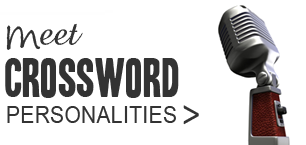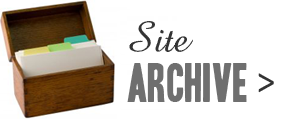
One day I chanced upon a freeform crossword in a magazine. The grid was awkward, unsightly. It struck me then that the crosswords I solve look way better than that.
As a "wiser" solver today, I respect the grid much more. Coming up is a series of posts, starting with this one, about different properties of the cryptic crossword grid, good and bad attributes, and ways in which setters do clever stuff with the grid.
The most visible grid property first – its appearance. If you're unfamiliar with grid terminology (checking? unches? blocked grid?) read through this to start with: Link.
Shape And Size
A typical cryptic crossword grid is square, and 15 x 15 in size. Grids used by The Hindu, Economic Times and most daily publications from UK fit that description. There could be different-sized grids too - the New Indian Express crossword is a smaller 13 x 13, while the Times Jumbo as large as 23 x 23. Smaller grids tend to be used for easier puzzles (I'm not sure why!).
The standard cryptic grid is a blocked grid – that is, within the grid there is a pattern of black-and-white squares. Each square is called a cell. Series of white squares into which answers are entered are called lights; the black squares are called darks, blacks, or blocks.
Rotational Symmetry
All mainstream crossword grids have 180° rotational symmetry, also called two-way symmetry or half-turn symmetry. This means that when the grid is turned upside down, the black squares and white squares are in the same locations. Some grids also have 90° symmetry, which is four-way symmetry or quarter-turn symmetry.
The rotational symmetry doesn't affect the solving in any way, just adds to visual appeal (except if you have a Poirot-esque obsession with order then it will help by not distracting you from the solving). It does help the setter in keeping other aspects of the grid consistent across the puzzle.
Good cryptic crossword grids have balanced spread of dark vs lights. There will be no huge black shapes or clusters of white within the grid.
This does impact solving in a way. More on this in the coming posts.
See It For Yourself!
 | Freeform Grid - No internal symmetry - Big black shapes |
 | American (Quick) Crossword Grid - Square, 15 x 15 - Half-turn rotational symmetry - Higher white:black ratio - Clusters of white |
 | Cryptic Crossword Grid - Square, 15 x 15 - Half-turn rotational symmetry - Lower white:black ratio - No clusters of white or black |
Related Posts:
- Barred Grid Crosswords
- Crossword Grid: Checking
- Crossword Grid: Connectivity
- Analysis of Gridman's Grids
If you wish to keep track of further articles on Crossword Unclued, you can subscribe to it in a reader via RSS Feed. You can also subscribe by email and have articles delivered to your inbox.








 Follow on Twitter
Follow on Twitter Join us on Facebook
Join us on Facebook Get RSS
Get RSS

10 comments
I think you mean that the black squares are called darks, blacks or blocks.
I guess blanks is a typo.
Thanks, fixed!
What you might not know is that the Cryptic Crossword Grid that you have used as an illustration was one of a set used by the very first compiler of The Hindu Crossword, having just copied it from its original source.
Some composers of The Hindu crossword use grids taken from other publications and some use original ones.
That's interesting, CV Sir. I wonder if copyright applies to empty grids too?
I find this a very good-looking grid. The source I got it from is visible as tooltip when you hover the mouse over it.
That is why I do not like the "American" grids. In such grids, you could complete a word without even attempting to complete it. And that is neither interesting nor challenging, IMO
Not that 15x UK Cryptic crosswords do not have "open" places.
Shuchi, if you see the weekday syndicated cryptic crossword on page 2 of the Deccan Herald published from the city where you live, you will find that the grid is a little different, with many "open" squares - no so ubiquitous as in the US non-cryptic puzzle grids but nevertheless present.
Please take a look and confirm!
CV
in Madras, the home of The Hindu
The American grid must be far more difficult to compile as the number of black squares are minimal which mean more letters crossing each other. That is why they use a lot of names I suppose.
The US LA Times CW apperas in the Times of India
I guess American crosswords are designed with more crossing letters, because quick clues don't lead unambiguously to the answer as cryptic clues do. A clue like "Animal in laboratory (3)" is most definitely RAT [T], even without crossings, but "Animal (3)" can have many possible answers. The solver needs more "checking" to verify which is the right one.
I'm talking about checking in the next post, which should be up by Thursday!
Colonel, I attempted the TOI quick crossword for a brief spell many years ago. That's where I picked up words like EPEE and ERNE from.
It's true that when you're just starting out with cryptic crosswords, it's easy to focus solely on the clues and overlook the grid itself. Exploring different properties of the cryptic crossword grid, both good and bad attributes, sounds like it will be a valuable resource for crossword enthusiasts.
Your explanation of rotational symmetry and its impact on the grid's visual appeal is indeed intriguing
Post a Comment